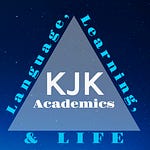In the field of psychology, schema refers to the pre-existing thoughts and ideas a person has that serve to organize their perceptions of the world. Psychologists like Bartlett and Kant in the 1930s, followed by Jean Piaget in the 1960s, pioneered and refined the idea of knowledge of the world around us being organized as structures or schemas in the mind. In childhood we build these schemas, or schemata, and use them to interact with new knowledge or concepts. In a way, we create a filing system in our minds to speed up our ability to interact with the new and exciting world around us.
In traditional Language Arts teaching, the importance of activating schema is a core concept in teaching reading. The idea that students will get more out of a piece of literature after they have spent a little time thinking about the ideas or themes to be found in it is widely accepted. Pre-reading questions that prompt students to access what they already know about a subject can lead to greater enjoyment and understanding of a piece of literature. In fact, lessons in critical thinking try to teach the habit of thinking deeply about what we already know of topics before we read anything that might have been made to influence us in any way. It is this comparison between what we already know and what we are now reading, that creates the gaps where unique concepts and knowledge can poke through.
When the concept of activating schema is transferred to the field of second language instruction, it changes slightly. Instead of activating prior knowledge for the benefit of enriching the enjoyment and understanding of a theme, this prior knowledge is activated so it can be used to mentally anchor the second language to the pre-existing first language. For the second language learner, the calling to consciousness of what is already known can be used as the platform where newly acquired vocabulary and grammar can be placed. In fact, I would go so far as to say that without this platform, what we build as language teachers is destined to quickly fall apart or decay.
For the second language learner, the calling to consciousness of what is already known can be used as the platform where newly acquired vocabulary and grammar can be placed
Starting a Lesson
When my students walk into the classroom, one of the first things I do is greet them in English. Greeting the students is not only a great way to immediately promote empathy, it is also a way to initiate the idea of communication as a fundamental part of each English lesson. In many of the students’ other classes, they are required to sit quietly in their seats and absorb as much content as possible while their other teachers explain concepts or teach new ideas. In the second language class, students need to be ready to engage in two-way communication right from the beginning. Undoubtedly, students have stored knowledge about the ways to greet others in their native languages. Accessing these schemata and performing the greetings in English is one way to quickly require students to get into ‘schema accessing mode’. From the start, students implicitly understand that they will be active in my class. They quickly see that they need to be stakeholders in a communicative environment that will force them to draw upon what they already know, and translate that function into a productive one using English. They are thus put into a situation where they are alert and eager to learn a new word or grammar function to help them perform successfully.
After the greetings have taken place, I do my best to ignite interest in the communicative episode that is most likely to contain the target language to be learned. To take a simple example, when students are learning the ways to introduce themselves to people, I ask them to recall times when they have been in a situation that required them to do that exact task.
“Do you remember when we first met?”
“Have any of you introduced, or been introduced to, a colleague or fellow student?”
“How do you usually react when someone asks you how to spell your name?”
These questions, and ones like it, are the way I get students to put themselves into real-life situations from their past. This requires them to access schemata related to introductions. This becomes the foundation to build upon in the lesson. Once this is done, I begin teaching the English phrases and grammar that they need to be able to perform these tasks successfully. If students are engaged and motivated, they will build parallel structures in their minds that have a greater chance of remaining with them into the future.
During the Lesson
During any given lesson, students will be asked to take what they have learned and apply it to communicative situations that are meant to mirror future chances they will have with English. Weeks, months, or possibly years down the road, when students may actually find themselves in a situation that requires them to recall what they have learned, it is hardly sensible to expect them to remember the exact words or grammatical structures that I taught them. If the lessons were based solely on rote memorization of vocabulary or conversations, I would guess that maybe one or two percent of students would be successful. This is when schemata become so important. Our brain’s innate filing system is already being used to organize a multitude of functions and experiences and the recall mechanism is used daily. Therefore, lessons that activate that system have a greater chance of remaining accessible to students in the future. The memories are recalled through more than one trigger. To this end, I endeavor to make things as real as possible.
During a lesson I try my best to get students to act out what they have learned using their entire body. Standing up and arranging themselves in positions that require the full range of postures, gestures, and facial expressions helps students encode what they have learned on multiple levels. In addition, asking students to perform skits using the newly acquired English requires them to connect deeply to it on an emotional level. If great care is taken by the teacher to make the environment comfortable and non-threatening - by using words of encouragement and praise - students will enjoy the pressure of performing for the class. The stakes are higher in front of their peers and this leads to a deeper encoding of what they have learned. Repetition is also employed to harden the pathways between new structure and the mind’s recall mechanism. Practicing a number of times, performing, and then watching others perform, helps students to get a good start at building a new connection to schema that will be more easily accessible when needed in the future.
Post Lesson
After the lesson is finished, students need the opportunity to do three important things. The first is the opportunity to recall what they have learned at spaced intervals. The intervals should be shorter at first and then increased over time. The first chance for recall is the weekly homework assignment. A lesson without a homework assignment that requires them to recall what they did in class is a failure as far as I am concerned. Sometime within a day or two of the lesson, students need to be required to submit a homework assignment that forces them to access the schema used in class. By using online assignments, I ensure that students perform and turn in their assignments within the first four to five days after a lesson. These assignments should not be overly challenging and can be graded solely on completion. The purpose is for students to make another connection to what was taught in the lesson, not to penalize them for small errors. In subsequent classes, short activities can be planned that revisit previously learned structures. Finally, unit tests and final tests can be used to provide opportunities for students to recall their lessons after even longer intervals.
The second thing students need an opportunity to do is to notice what they still do not know. This happens through the use of the homework assignment given out at the end of class, and also through the use of online journal writing. Students learning new languages should be asked to write journals as a way to communicate one-on-one with the teacher. This communication allows the students to formulate an idea in their minds about what they want to say, and then through the writing process they can notice what words or structures they do not know that are associated with the topic covered in the lesson. Some of these words or structures may or may not have been taught in the lesson, but either way the student is making an effort to fill in the blanks of what they need to communicate successfully.
The third thing students need an opportunity to do is to review what they have learned and use it to feel success in some way. There are a number of ways to do this. In the first ten minutes of each of my classes, after the greetings are done, I give a listening quiz that students access and answer online using their own laptops, tablets, or smartphones. I play examples of conversations from the previous lesson and students answer multiple choice questions. These tests are never difficult and students who paid attention in the previous lesson can easily get full marks. This reinforces the vocabulary and grammar learned in the prior lesson, and more importantly, provides a quick boost of confidence to students before the next class begins. I believe that the positive experience reinforces the new connections to schemata created through previous lessons.
To ultimately be successful, teachers need to build experiences for students without the raw materials that experiences are usually made from
Building Experience
To ultimately be successful, teachers need to build experiences for students without the raw materials that experiences are usually made from. In a perfect world, all our students could learn English in a country where English is the common language for all, surrounded in enriching language experiences seven days a week. Unfortunately, this is not the case and so we need to do our best to ‘hijack’ the experience building parts of the brain and create lasting impressions that students can take with them as tools they can use in the future. By employing some of the methods I have outlined above, we can start to do a better job of helping students both remember and use what we spend so much time teaching them. This is by no means a complete list of all we can do, but I believe that if activating schema is one of the core tenets of your teaching philosophy, you can use your own unique teaching tools as an extension to fulfill your responsibility to your students and your institutions.








